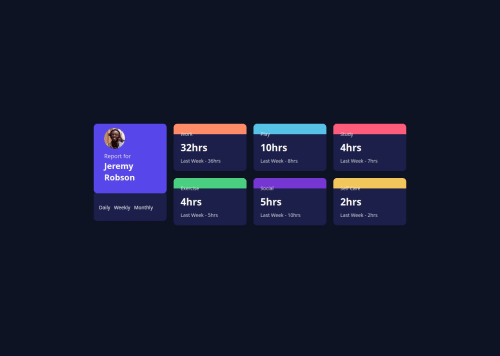Time tracking dashboard

Solution retrospective
I’m most proud of how efficiently I implemented the design while keeping the layout responsive and visually balanced. Next time, I would refine the spacing and alignment even more to ensure perfect consistency across all screen sizes.
What challenges did you encounter, and how did you overcome them?One challenge was aligning the profile section with the activity cards while maintaining a clean and balanced layout. I overcame this by adjusting grid spacing, increasing the card sizes slightly, and ensuring consistent padding and margins for a more structured look.
What specific areas of your project would you like help with?I would like help with optimizing the responsiveness of the dashboard, ensuring that the layout remains visually balanced on different screen sizes. Additionally, any suggestions for improving the overall design aesthetics would be appreciated.
Please log in to post a comment
Log in with GitHubCommunity feedback
No feedback yet. Be the first to give feedback on NayyabAqib's solution.
Join our Discord community
Join thousands of Frontend Mentor community members taking the challenges, sharing resources, helping each other, and chatting about all things front-end!
Join our Discord